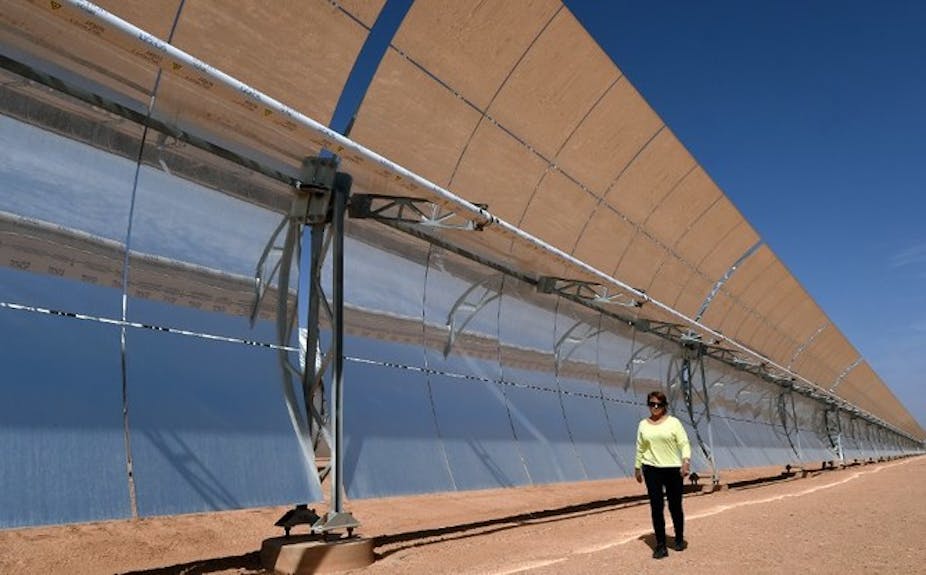The latest report from the United Nations Economic Commission for Africa features an in-depth examination of green industrialisation opportunities across the continent. The challenge lies in transforming production methods and creating infrastructure to secure food, water and energy supplies.
Africa only plays a small part in environmental degradation. But the continent is extremely vulnerable to climate-related risks. The goal of green industrialisation is to keep Africa’s greenhouse gas emissions low and to mitigate the fallout from climatic change and famines.
The agricultural sector is one of the key players in green industrialisation. So, it’s crucial to implement the Comprehensive Africa Agriculture Development Programme. This will aim to stimulate trade between African countries, boost agricultural products and services, and shore up livelihoods and production systems against climate change and its risks.
These ideas were echoed by AU Commission head Nkosazana Dlamini-Zuma at the 23rd AU summit when she said: “It is time for heads of state to make agriculture a chief national development priority, and open the way to sustainable development for their people. Prosperity is at hand; it is in our hands.”

Four main strategies
There are a few development strategies to make green industrialisation a reality in Africa. The four main ones are: changing price incentives, regulating environmental standards, greening public infrastructure, and promoting less resource-intensive economic growth – decoupling growth from environmental impact.
Changing price incentives will help a gradual withdrawal from fossil fuel subsidies. Economic growth rates for African countries are closely linked to the price of primary commodities, and therefore to fossil fuels. There are already moves underway to remedy this situation. Namibia and Kenya have introduced fuel subsidy reforms. The use of public transport is being promoted in Kenya.
Regulating environmental standards is a way to prevent and combat environmental damage from production activities. The African continent has an exceptional history of environmental incidents. Shell’s 2008 pipeline leak in the Niger delta is the most notable. The 500 tons of toxic substances spread around Abidjan in the Ivory Coast in 2006 by the global corporation Trafigura, which poisoned local communities and killed 17 people, is another. There was also the spillage in August 2013 of millions of gallons of petrol by a subsidiary of China National Petroleum Corporation in Koudalwa, Chad. These countries have since established national environmental protection standards. But enforcing them is difficult, hindered by a lack of human and financial resources.
Greening public infrastructure means equipping African countries with environmentally friendly services. This allows them to skip ahead in the process of industrialisation. Examples of this process can be found in South Africa’s new public works programme and in the city of Durban’s local climate protection programme. Tanzania and Zimbabwe also hint at this strategy with their national cleaner production centres. Uganda’s leather industry, the Ghanaian wood value chain and the agro-industries of both Ivory Coast and Nigeria are all examples of such initiatives.
Decoupling growth from environmental impact will limit the use of environmental inputs in production. It will also decrease toxic emissions and discharge. Hydroelectric power stations like Inga III in the DRC, the Mphanda Nkuwa dam in Mozambique and Sambagalou in Senegal are a move in this direction. Malawi, Rwanda and Kenya are investing in biofuels, solar energy and geothermal energy, respectively. Angola, Botswana and Namibia jointly operate the cross-border Cubango-Okavango River Basin hydropower project. Mauritius is greening its maritime chain. In South Africa, efforts are centred on water management and sustainable mining. Lastly, it is worth mentioning Ethiopia’s eco-industrial park in Hawassa.
Green industrialisation could therefore provide the basis for an African renaissance. Shared projects like hydropower stations, roads and smart cities are the first tangible signs of this future federation.
Translated from the French by Alice Heathwood for Fast for Word.


